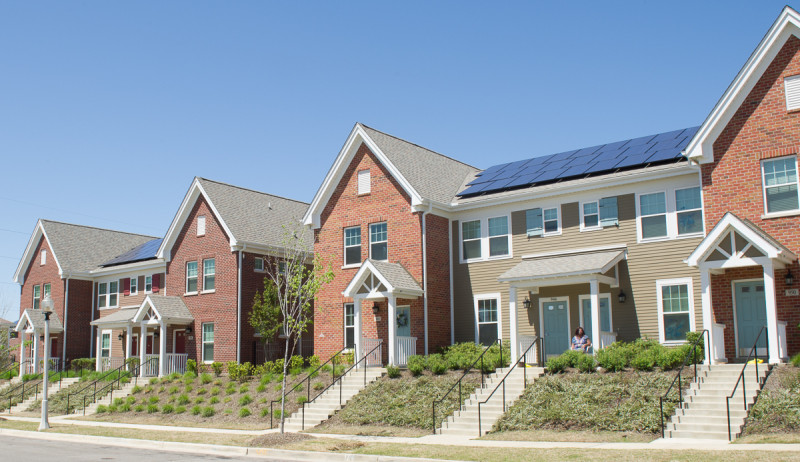Paris, the capital and largest city of France, is a major global center for finance, diplomacy, commerce, culture, fashion, and gastronomy. As of January 2025, its population was estimated at over 2 million. Renowned for its significant role in the arts and sciences, Paris earned the nickname 'City of Light' in the 19th century due to its early adoption of extensive street lighting.
1900: Paris hosted Summer Olympics
In 1900, Paris hosted the Summer Olympics.
1900: Summer Olympics
In 1900, Paris hosted the Summer Olympics.
1900: Inauguration of the first Métro line
In 1900, Paris inaugurated its first Métro line.
1900: Universal Exposition
In 1900, the Universal Exposition gave Paris the Pont Alexandre III, the Grand Palais, the Petit Palais and the first Paris Métro line.
1900: Michelin Guide standard for French restaurants
Since 1900, the Michelin Guide has been a standard guide to French restaurants.
1901: Paris Population
By 1901, the population of Paris had grown to about 2,715,000.
1911: Olympia Paris invented the grand staircase
In 1911, the dance hall Olympia Paris invented the grand staircase as a settling for its shows.
1913: First performances of Diaghilev's Ballets Russes
In 1913, the first performances of Diaghilev's Ballets Russes took place at the Théâtre des Champs-Élysées.
1921: Historical peak of Paris population
In 1921, Paris reached its historical peak population of 2.9 million.
1924: Paris hosted Summer Olympics
In 1924, Paris hosted the Summer Olympics.
1924: Summer Olympics
In 1924, Paris hosted the Summer Olympics.
1929: Annexation of forest parks
In 1929, the Bois de Boulogne and Bois de Vincennes forest parks were annexed to the city, bringing its area to about 105 km (41 sq mi).
1938: 1938 FIFA World Cup final
In 1938, Paris hosted the finals of the FIFA World Cup at the Stade Olympique de Colombes.
June 1940: German Army Marches into Paris
In June 1940, the German army marched into Paris, which had been declared an "open city".
July 1942: Arrest of Jews
On 16–17 July 1942, following German orders, the French police and gendarmes arrested 12,884 Jews, including 4,115 children, and confined them during five days at the Vel d'Hiv, from which they were transported by train to the extermination camp at Auschwitz. None of the children came back.
August 1944: Liberation of Paris
On 25 August 1944, the city was liberated by the French 2nd Armoured Division and the 4th Infantry Division of the United States Army.
1946: Opening of Le Lido
In 1946, Le Lido opened on the Champs-Élysées.
1949: Age of buildings in Paris
As of 1949, sixty-two percent of buildings were from 1949 and before.
1951: FIBA EuroBasket 1951 final stages
In 1951, Paris hosted the final stages of the FIBA EuroBasket.
1951: Opening of Crazy Horse Saloon
In 1951, the Crazy Horse Saloon opened, featuring strip-tease, dance, and magic.
1954: Population of Paris in 1954
In 1954, the population of Paris was 2,850,000.
April 1956: Paris twinned
Since April 1956, Paris is exclusively and reciprocally twinned.
November 1958: UNESCO headquarters in Paris
Since November 1958, the United Nations Educational, Scientific and Cultural Organization (UNESCO) has had its headquarters in Paris.
1960: 1960 UEFA European Championships final
In 1960, Paris hosted the finals of the UEFA European Championships at the Parc des Princes stadium.
August 1961: FLN attacks and curfew
In August 1961, the pro-independence FLN targeted and killed 11 Paris policemen, leading to the imposition of a curfew on Muslims of Algeria.
October 1961: Algerian protest and confrontations
On 17 October 1961, an unauthorised but peaceful protest demonstration of Algerians against the curfew led to violent confrontations between the police and demonstrators, in which at least 40 people were killed.
1961: Delouvrier's ville nouvelle political initiative
Difficult areas are located in social housing districts created by Delouvrier's 1961 "ville nouvelle" political initiative.
1961: Paul Delouvrier becomes head of the Paris region
In 1961, Paul Delouvrier became head of the Paris region and promised to resolve the disconnect between Paris and its suburbs.
1962: Migration of residents to the suburbs
Between 1962 and 1975, there was a dramatic migration of residents to the suburbs due to factors such as de-industrialisation and high rent.
1962: OAS bombings
Throughout 1961 and 1962, the anti-independence Organisation armée secrète (OAS) carried out a series of bombings in Paris.
1967: Establishment of Orchestre de Paris
In 1967, the Orchestre de Paris was established.
May 1968: Student Protests and General Strike
In May 1968, protesting students occupied the Sorbonne and put up barricades in the Latin Quarter, which led to a two-week general strike involving Parisian blue-collar workers.
1968: Paris becomes a department
From 1968 the parent "District de la région parisienne" was reorganised into several new departments and Paris became a department in itself
1968: Student demonstrations
In 1968, student demonstrations led to the breakup of the University of Paris in 1970.
1969: Tour Maine-Montparnasse Construction
The Tour Maine-Montparnasse construction started between 1969 and 1973. It was highly controversial, and it remains the only building in the centre of the city over 32 storeys high.
1970: Breakup of the University of Paris
In 1970, following student demonstrations in 1968, the University of Paris was broken up into thirteen autonomous universities.
1973: Périphérique expressway completion
In 1973, the Périphérique expressway encircling the city was completed.
1973: Tour Montparnasse tallest building
In 1973, the Tour Montparnasse became the tallest building in both Paris and France, standing at 210 m (690 ft).
1974: Buildings built between 1949 and 1974
20 percent of Paris buildings were built between 1949 and 1974.
1974: Opening of Charles de Gaulle Airport
In 1974, Charles de Gaulle Airport opened to commercial traffic.
1974: Municipal autonomy granted
In 1974, Paris was granted municipal autonomy by the National Assembly.
1975: Migration of residents to the suburbs
Between 1962 and 1975, there was a dramatic migration of residents to the suburbs due to factors such as de-industrialisation and high rent.
1975: Status of Paris Changed
In 1975, the National Assembly changed the status of Paris to that of other French cities.
1975: Tour de France finish on the Champs-Elysées
Since 1975, the final stage of the Tour de France bicycle race has finished on the Champs-Elysées in Paris.
March 1977: Jacques Chirac elected Mayor
Jacques Chirac was elected the first modern elected mayor of Paris in March 1977, becoming the city's first mayor since 1871.
1977: Centre Georges Pompidou
In 1977, President Georges Pompidou started the Centre Georges Pompidou.
1977: District of the Paris region renamed Île-de-France
In 1977, the district of the Paris region was renamed "Île-de-France".
1977: Creation of new parks
Since 1977, the city has created 166 new parks.
1983: Louvre Pyramid construction start
Between 1983–1989, President François Mitterrand had the Louvre Pyramid with its underground courtyard built.
1984: 1984 UEFA European Championships final
In 1984, Paris hosted the finals of the UEFA European Championships at the Parc des Princes stadium.
1985: Opéra Bastille construction start
Between 1985–1989, President François Mitterrand had the Opéra Bastille built.
1986: Musée d'Orsay
In 1986, Valéry Giscard d'Estaing began the Musée d'Orsay.
1986: Opening of Médiathèque Musicale Mahler
In 1986, the Médiathèque Musicale Mahler opened, containing collections related to music.
1987: Parc de la Villette creation
In 1987, the Parc de la Villette was created.
1989: Opéra Bastille construction end
Between 1985–1989, President François Mitterrand had the Opéra Bastille built.
1990: Population of Paris in 1990
In 1990, the population of Paris was 2,152,000.
1991: UNESCO World Heritage Site
In 1991, the historical district along the Seine in the city centre was classified as a UNESCO World Heritage Site.
1992: Paris bids for Summer Olympics
In 1992, Paris bid for the Olympic Games but lost to Barcelona.
1992: Parc André Citroën creation
In 1992, the Parc André Citroën was created.
1992: Opening of the tramway network
Since 1992, the tramway, a light rail network, has been operational in the Paris region.
1993: Charles de Gaulle becomes busiest airport
In 1993, Charles de Gaulle Airport became the busiest Parisian airport.
1994: Completion of François Mitterrand Library
In 1994, the François Mitterrand Library was completed to a design of Dominique Perrault.
1996: Deputy Mayors in arrondissements
As of 1996, there were 20 arrondissement mayors and 120 deputy mayors in Paris.
1996: Bibliothèque nationale de France
In 1996, President François Mitterrand had the new site of the Bibliothèque nationale de France built.
1997: Parc de Bercy creation
In 1997, the Parc de Bercy was created.
1999: Population increase begins
From 1999 to 2012, Paris's population increased from 2,125,246 to 2,240,621.
1999: EuroBasket 1999 final stages
In 1999, Paris hosted the final stages of the EuroBasket at the Palais Omnisports de Paris-Bercy.
2000: Increase in foot trips
From 2000 to 2018, the number of trips made by foot increased by 50% in the Grand Paris metropolis.
2000: 2000 UEFA Champions League Final
In 2000, the UEFA Champions League Final was played in the Stade de France.
March 2001: Bertrand Delanoë elected Mayor
In March 2001, Bertrand Delanoë became the first socialist mayor.
2003: Heat wave
In 2003, a heat wave occurred where temperatures exceeded 30 °C (86 °F) for weeks, reached 40 °C (104 °F) on some days, and rarely cooled down at night.
2006: Musée du quai Branly
In 2006, Jacques Chirac opened the Musée du quai Branly.
2006: 2006 UEFA Champions League Final
In 2006, the UEFA Champions League Final was played in the Stade de France.
2007: Vélib' bicycle rental system introduced
In 2007, Bertrand Delanoë introduced the Vélib', a system which rents bicycles, in an effort to reduce car traffic.
2007: Grand Paris project launched
In 2007, President Nicolas Sarkozy launched the Grand Paris project, to integrate Paris more closely with the towns in the region around it.
2007: Employment in Paris
In 2007, a majority of Paris's salaried employees filled business service jobs.
2007: Parc Clichy-Batignolles creation
In 2007, the Parc Clichy-Batignolles was created.
2007: Merger of Levallois SCB and Paris Basket Racing
In 2007, the basketball teams Levallois SCB and Paris Basket Racing merged to create the club Metropolitans 92.
March 2008: Bertrand Delanoë re-elected
In March 2008, Bertrand Delanoë was re-elected as mayor.
2008: Sustainable Transport Award
In 2008, Paris received the Sustainable Transport Award.
2008: Religious Practices
In 2008, it was reported that of immigrants from predominantly Muslim countries, 25 percent went to the mosque regularly, 41 percent practised the religion, and 34 percent were believers, but did not practice the religion.
2009: Education levels in Paris
In 2009, around 40 percent of Parisians held a licence-level diploma or higher, the highest proportion in France.
2010: Employment in La Défense
In 2010, La Défense was the workplace of 144,600 employees, with a significant portion in finance, insurance, and business support services.
2011: Grand Paris Express plans approved
In 2011, the City of Paris and the national government approved the plans for the Grand Paris Express.
2011: Number of residences in Paris
In 2011, the City of Paris had 1,356,074 residences, with 85.9 percent being main residences, 6.8 percent secondary residences, and 7.3 percent empty.
2011: Population of Paris
In 2011, the population of Paris reached 2.25 million.
2011: Religious Affiliation in Paris Region
In a 2011 survey, 61 percent of residents of the Paris Region identified as Roman Catholic, 7 percent as Muslims, 4 percent as Protestants, 2 percent as Jewish and 25 percent as without religion.
2011: Tour First becomes tallest building
Since 2011, the La Défense quarter Tour First tower in Courbevoie holds the record for tallest building.
2012: Job sectors in the Paris Region
As of the 2012 census, 59.5% of jobs in the Paris Region were in market services, 26.9% in non-market services, 8.2% in manufacturing and utilities, 5.2% in construction, and 0.2% in agriculture.
2012: Estimated Muslim Population in Paris
In 2012 and 2013, it was estimated that there were almost 500,000 Muslims in the City of Paris, 1.5 million Muslims in the Île-de-France region.
2012: Poverty line in Paris
In 2012, 14 percent of households in Paris earned less than €977 per month, which was the official poverty line.
2012: Eurostat Population Figures
In 2012, Eurostat placed Paris (6.5 million people) behind London (8 million) and ahead of Berlin (3.5 million) based on "urban audit core cities".
2012: Electricity generation sources
In 2012, around 50% of electricity generated in the Île-de-France came from cogeneration energy plants.
2012: Paris most densely populated city
In 2012, the Commune of Paris was the most densely populated city in the European Union, with 21,616 people per square kilometre, according to Eurostat.
2012: British and US citizens in Paris
In 2012, there were 8,810 British citizens and 10,019 United States citizens living in the City of Paris, and 20,466 British citizens and 16,408 United States citizens living in the entire Paris Region.
2012: Immigrant population in Paris
In the 2012 census, there were 135,853 immigrants from Europe, 112,369 from the Maghreb, 70,852 from sub-Saharan Africa and Egypt, 5,059 from Turkey, 91,297 from Asia outside Turkey, 38,858 from the Americas, and 1,365 from the South Pacific residing in the City of Paris.
June 2013: Promenade des Berges de la Seine Inaugurated
In June 2013, Bertrand Delanoë inaugurated the Promenade des Berges de la Seine, an urban promenade and park along the Left Bank of the Seine.
2013: Population decline between 2013 and 2023
Between 2013 and 2023, the population of Paris fell by 122,919, or about five percent, as declared by the Mayor of Paris, Anne Hidalgo, indicating a "de-densification" of the city.
2013: Estimated Muslim Population in Paris
In 2012 and 2013, it was estimated that there were almost 500,000 Muslims in the City of Paris, 1.5 million Muslims in the Île-de-France region.
2013: Promenade des Berges de la Seine creation
In 2013, the Promenade des Berges de la Seine was created, featuring floating gardens.
April 2014: Anne Hidalgo elected Mayor
Anne Hidalgo, a socialist, was first elected mayor in April 2014.
October 2014: Opening of Louis Vuitton Foundation museum
In October 2014, the Contemporary Art museum of the Louis Vuitton Foundation opened in the Bois de Boulogne.
2014: Jewish population of the Paris Region
In 2014, the Jewish population of the Paris Region was estimated to be 282,000, the largest concentration of Jews in the world outside of Israel and the United States.
2014: Closing of Citroën assembly plant
In 2014, the industry suffered a major loss with the closing of a major Aulnay-sous-Bois Citroën assembly plant.
2014: Nobel Prize in Literature winner
In 2014, the winner of the Nobel Prize in Literature, Patrick Modiano, based most of his literary work on the depiction of the city during World War II and the 1960s–1970s.
January 2015: Al-Qaeda attacks in Paris region
In January 2015, Al-Qaeda in the Arabian Peninsula claimed attacks across the Paris region. 1.5 million people marched in Paris in a show of solidarity against terrorism and in support of freedom of speech.
January 2015: Opening of Philharmonie de Paris
In January 2015, the Philharmonie de Paris, the modern symphonic concert hall of Paris, opened.
December 2015: 100th anniversary of Edith Piaf's birth
December 2015 marked the 100th anniversary of the birth of Edith Piaf, widely regarded as France's national chanteuse.
December 2015: Union of the Right wins regional election
In December 2015, the Union of the Right, led by Valérie Pécresse, narrowly won the regional election, defeating the Socialists and ecologists who had governed the region for seventeen years.
2015: Daily Métro Passengers
In 2015, Paris's Métro network carried about 5.23 million passengers daily.
2015: Population of Grand Paris
In 2015, the Metropole du Grand Paris had a population of 6.945 million people.
2015: Aerospace companies in Paris region
In 2015, the Paris region's aerospace companies employed 100,000 workers.
January 2016: Patrick Ollier elected president of the metropolitan council
In January 2016, Patrick Ollier was elected as the first president of the metropolitan council.
January 2016: Métropole du Grand Paris comes into existence
In January 2016, the Métropole du Grand Paris came into existence as part of measures to unite Paris with its suburbs.
January 2016: Grand Paris comes into existence
In January 2016, the Métropole du Grand Paris, or simply Grand Paris, came into existence.
January 2016: Metropolis of Grand Paris created
On 1 January 2016, the Metropolis of Grand Paris, with a population of 6.7 million, was created.
April 2016: Paris Agreement signed
On 22 April 2016, the Paris Agreement was signed by 196 nations of the United Nations Framework Convention on Climate Change.
September 2016: Paris ranks seventh most expensive city
In September 2016, a survey by the Economist Intelligence Unit ranked Paris as the seventh most expensive city in the world.
2016: Tourism-related workforce in Greater Paris
In 2016, 12.4 percent of the total workforce in Greater Paris was engaged in tourism-related sectors.
2016: Airbnb paid tourism tax
In 2016, Airbnb paid the city government 7.3 million euros in tourism tax.
2016: 2016 UEFA European Championships final
In 2016, Paris hosted the finals of the UEFA European Championships.
2017: Paris ranked seventh most expensive city in the world
In 2017, Paris ranked as the seventh most expensive city in the world.
2017: Population Decline
In 2017, Paris's population declined slightly.
2017: Social housing in Paris
In 2017, social or public housing accounted for 19.9 percent of Paris' residences.
2017: Population of the Paris agglomeration
In 2017, the Paris agglomeration had a population of 10,785,092, making it the largest urban area in the European Union.
2018: Increase in foot trips
From 2000 to 2018, the number of trips made by foot increased by 50% in the Grand Paris metropolis.
2018: Avenue Montaigne most expensive residential street
In 2018, Avenue Montaigne was the most expensive residential street in Paris, with an average price of 22,372 euros per square metre.
2018: Paris second-busiest airline destination
In 2018, Paris was the second-busiest airline destination in the world with 19.10 million visitors.
2018: Population Decline
In 2018, Paris's population declined slightly.
2018: Michelin three-star restaurants in Paris
In 2018, ten of the 27 Michelin three-star restaurants in France were located in Paris.
February 2019: Paris NGO counts homeless persons
In February 2019, a Paris NGO counted 3,641 homeless persons in Paris, with a majority having been homeless for over a year.
July 2019: Highest recorded temperature
The highest recorded temperature in Paris was 42.6 °C (108.7 °F) on 25 July 2019.
2019: Hotels in Greater Paris
In 2019, Greater Paris had 2,056 hotels with a total of 121,646 rooms.
2019: Record visitors to Greater Paris
In 2019, Greater Paris received a record 38 million visitors, measured by hotel arrivals.
2019: Paris Region's Population and GDP
In 2019, the Paris region's population accounted for 18.8 percent of metropolitan France, while its GDP accounted for 32 percent of metropolitan France's GDP.
2019: Airport Traffic
In 2019, the three commercial international airports serving Paris recorded traffic of 112 million passengers.
2019: Tourism 13 percent lower in Paris region
In 2019, tourism was 13 percent lower in the Paris region.
June 2020: Anne Hidalgo re-elected Mayor
Anne Hidalgo was re-elected mayor in June 2020.
2020: Competencies of the Metropolitan Council
By 2020, the basic competencies of the Metropolitan Council were expected to include urban planning, housing, and protection of the environment.
2020: Visitors at Cité des sciences et de l'industrie
In 2020, the Cité des sciences et de l'industrie hosted 984,000 visitors.
2020: Creation of Paris Centre
In 2020, the creation of Paris Centre, a unified administrative division with a single mayor covering the first four arrondissements, took effect.
2020: Immigrant and Descendant Population
In 2020–2021, about 6 million people, or 41% of the population of the Paris Region, were either immigrants (21%) or had at least one immigrant parent (20%).
2021: Immigrant and Descendant Population
In 2020–2021, about 6 million people, or 41% of the population of the Paris Region, were either immigrants (21%) or had at least one immigrant parent (20%).
2021: Population Decline
In 2021, Paris's population declined slightly.
2021: Most-visited museums in Paris
In 2021, the Louvre received 2.8 million visitors, maintaining its position as the most-visited museum. The second-most visited museum in the city in 2021 was the Centre Georges Pompidou, also known as Beaubourg, with 1.5 million visitors and the third most visited Paris museum in 2021 was the National Museum of Natural History with 1,4 million visitors.
2021: Paris Region GDP
In 2021, the Paris Region had a nominal GDP of €765 billion (US$1.064 trillion when adjusted for PPP).
2021: Top French companies in Fortune Global 500 headquartered in Paris Region
In 2021, the top French companies listed in the Fortune Global 500 were headquartered in the Paris Region. The Paris Region's GDP ranked first among EU metropolitan regions in 2021.
2021: Increase in tourism in Paris region
In 2021, tourism in the Paris region increased by 95 percent.
2021: Unemployment rate in Paris
In the 4th trimester of 2021, the unemployment rate in Paris was six percent.
January 2022: Population of the City of Paris
In January 2022, the population of the City of Paris was 2,165,423, according to the INSEE.
2022: Cost of Living in Paris
According to the Economist Intelligence Unit Worldwide Cost of Living Survey, in 2022, Paris was the city with the ninth-highest cost of living in the world.
2022: Transportation statistics
In 2022, 53.3% of trips in Paris were made on foot, 30% on public transport, 11.2% on bicycles and 4.3% on cars.
2022: Paris Population Density
In 2022, Paris was the 30th most densely populated city in the world.
2022: Top cultural attractions in Paris
In 2022, Paris's top cultural attractions were the Louvre Museum, the Eiffel Tower, the Musée d'Orsay, and the Centre Pompidou.
2022: 2022 UEFA Champions League Final
In 2022, the UEFA Champions League Final was played in the Stade de France.
2022: Tourism recovery in Paris region
In 2022, tourism continued to recover in the Paris region, increasing to 44 million visitors, but still lower than in 2019.
January 2023: Population of the City of Paris
In January 2023, the population of the City of Paris was 2,102,650, according to the INSEE.
January 2023: Île-de-France Region Population
In January 2023, the Île-de-France region, or Paris Region, had an official estimated population of 12,271,794 inhabitants.
2023: Charles de Gaulle ranking
In 2023, Charles de Gaulle Airport was the 4th busiest airport in the world by international traffic.
2023: 2023–24 EuroCup win of Paris Basketball
In 2023, Paris Basketball had rapid growth to success and won the 2023-24 EuroCup.
2023: Sustainable Transport Award
In 2023, Paris received the Sustainable Transport Award for the second time.
2023: Louvre Visitors
In 2023, the Louvre received 8.9 million visitors.
2023: Formation of Paris Musketeers
In 2023, the Paris Musketeers, a professional American football team, were formed in the city and joined the European League of Football.
2024: Paris considered most attractive city by Euromonitor
As of 2024, Paris was considered the most attractive city in the world for the fourth year in a row by the Euromonitor Global Cities Destination Index.
2024: Paris to host Summer Olympics
In 2024, Paris hosted the Summer Olympics.
2024: Summer Olympics
In 2024, Paris hosted the Summer Olympics.
2024: Walking as the most popular mode of transportation
In 2024, walking is the most popular mode of transportation in Paris, accounting for 53% of all trips.
January 2025: Estimated population of Paris
In January 2025, the estimated population of Paris was 2,048,472 residents.
2025: Home of prestigious universities
In 2025, Paris is home to prestigious universities in science and technology, political science, management and multidisciplinary universities.
2030: Grand Paris Express completion scheduled
The Grand Paris Express system is scheduled to be completed by 2030.
Mentioned in this timeline

Basketball is a team sport played on a rectangular court...
The United States of America is a federal republic located...
Hong Kong is a Special Administrative Region of the People's...
Germany officially the Federal Republic of Germany is a Western...
World War II - was a global conflict between the...
Africa is the second-largest and second-most populous continent comprising of...
Trending

7 months ago Sloane Stephens' arm workout and Medvedev's revelation shook the French Open tennis.

2 months ago Predictions Surround Eva Lys Matches at Merida Open Akron and WTA Hong Kong.

3 months ago Tereza Valentová Praised by Coco Gauff as a Potential WTA Tour Threat

1 month ago Housing Crisis: Americans Face Trade-off Between Affordability and Safety Amidst Rising Prices.

3 months ago ATP Basel Day 2 Predictions: Wawrinka vs Kecmanovic, Mpetshi Perricard vs Fonseca
7 months ago Popyrin Faces Draper at Queen's Club Amidst Murray Flashbacks and Tournament Predictions.
Popular

Stranger Things created by the Duffer Brothers is a popular...

XXXTentacion born Jahseh Dwayne Ricardo Onfroy was a controversial yet...

Kelsey Grammer is an accomplished American actor producer and singer...

Candace Owens is an American conservative political commentator and author...

Bernie Sanders is a prominent American politician currently serving as...

Melania Trump a Slovenian-American former model has served as First...